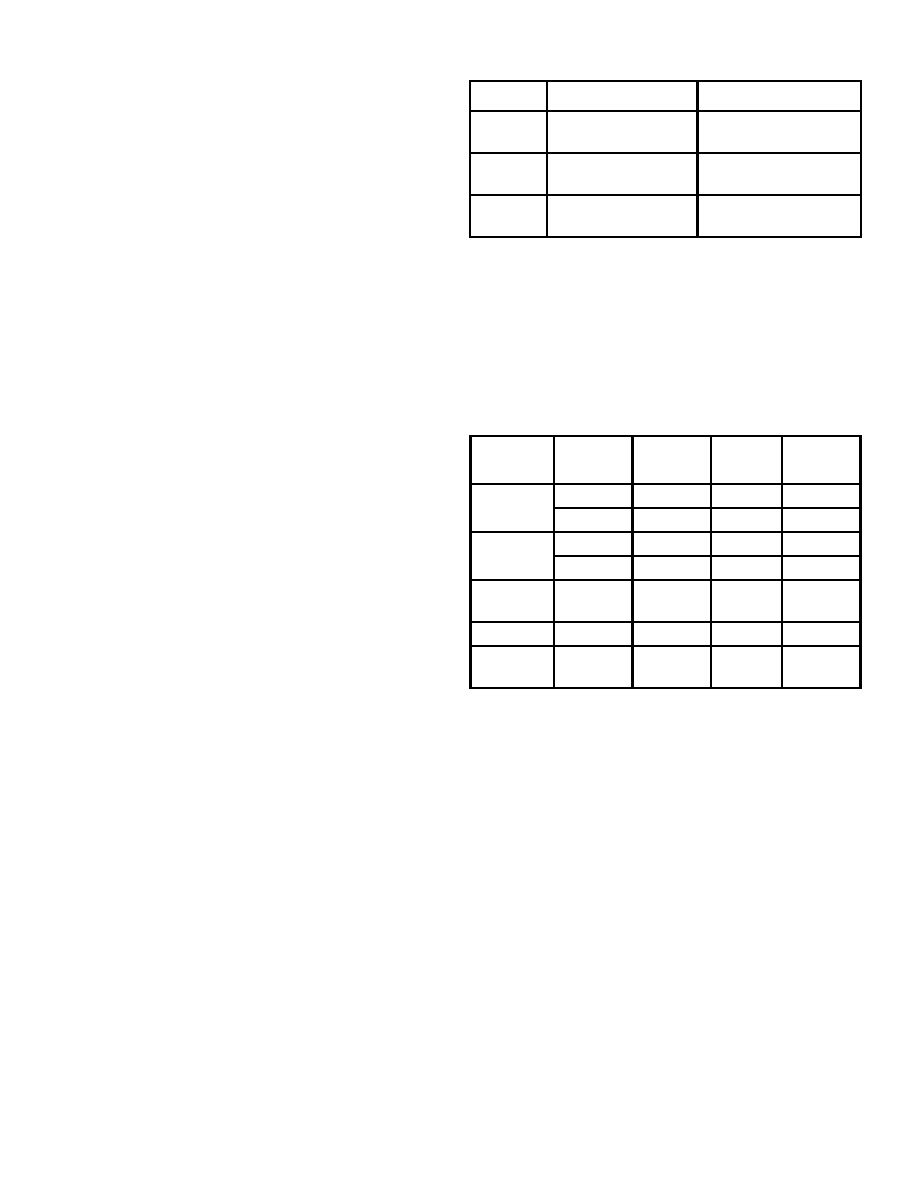- 您現(xiàn)在的位置:買賣IC網(wǎng) > PDF目錄298813 > ACT-7000ASC-300F17I 64-BIT, 300 MHz, RISC PROCESSOR, CQFP208 PDF資料下載
參數(shù)資料
| 型號: | ACT-7000ASC-300F17I |
| 元件分類: | 微控制器/微處理器 |
| 英文描述: | 64-BIT, 300 MHz, RISC PROCESSOR, CQFP208 |
| 封裝: | 1.120 X 1.120 INCH, CERAMIC, QFP-208 |
| 文件頁數(shù): | 22/26頁 |
| 文件大小: | 231K |
| 代理商: | ACT-7000ASC-300F17I |
第1頁第2頁第3頁第4頁第5頁第6頁第7頁第8頁第9頁第10頁第11頁第12頁第13頁第14頁第15頁第16頁第17頁第18頁第19頁第20頁第21頁當(dāng)前第22頁第23頁第24頁第25頁第26頁

5
SCD7000A Rev C 9/9/09
Aeroflex Plainview
view of the processors operation however since the
out-of-order completion of loads, stores, and long latency
floating-point operations can result in there being even
more instructions in process than what is shown.
Note that instruction dependencies, resource conflicts,
and branches result in some of the instruction slots being
occupied by NOPs.
Integer Unit
Like the ACT 52xx family, the
ACT 7000ASC
implements the MIPS IV Instruction Set Architecture, and
is therefore fully upward compatible with applications that
run on processors such as the R4650 and R4700 that
implement the earlier generation MIPS III Instruction Set
Architecture. Additionally, the ACT 7000ASC includes
two implementation specific instructions not found in the
baseline MIPS IV ISA, but that are useful in the embedded
market place. Described in detail in a later section of this
datasheet,
these
instructions
are
integer
multiply-accumulate and three-operand integer multiply.
The
ACT 7000ASC integer unit includes thirty-two
general purpose 64-bit registers, the HI/LO result registers
for the two-Pipeline operand integer multiply/divide
operations, and the program counter, or PC. There are two
separate execution units, one of which can execute
function, or F, type instructions and one which can execute
memory, or M, type instructions. See above for a
description of the instruction types and the issue rules. As
a special case, integer multiply/divide instructions as well
as their corresponding MFHi and MFLo instructions can
only be executed in the F type execution unit. Within each
execution unit the operational characteristics are the same
as on previous MIPS designs with single cycle ALU
operations (add, sub, logical, shift), one cycle load delay,
and an autonomous multiply/divide unit.
Register File
The
ACT 7000ASC has thirty-two general purpose
registers with register location (r0) hard wired to zero
value. These registers are used for scalar integer operations
and address calculation. In order to service the two integer
execution units, the register file has four read ports and two
write ports and is fully bypassed both within and between
the two execution units to minimize operation latency in
the pipeline.
ALU
The ACT 7000ASC has two complete integer ALU’s
each consisting of an integer adder/subtractor, a logic unit,
and a shifter. Table 3 shows the functions performed by the
ALU’s for each execution unit. Each of these units is
optimized to perform all operations in a single processor
cycle.
Integer Multiply/Divide
The ACT 7000ASC has a single dedicated integer
multiply/divide unit optimized for high-speed multiply and
multiply-accumulate operations. The multiply/divide unit
resides in the F type execution unit. Table 4 shows the
performance of the multiply/divide unit on each operation.
The baseline MIPS IV ISA specifies that the results of a
multiply or divide operation be placed in the Hi and Lo
registers. These values can then be transferred to the
general purpose register file using the Move-from-Hi and
Move-from-Lo (MFHI/MFLO) instructions.
In addition to the baseline MIPS IV integer multiply
instructions, the ACT 7000ASC also implements the
3-operand multiply instruction, MUL. This instruction
specifies that the multiply result go directly to the integer
register file rather than the Lo register. The portion of the
multiply that would have normally gone into the Hi register
is discarded. For applications where it is known that the
upper half of the multiply result is not required, using the
MUL instruction eliminates the necessity of executing an
explicit MFLO instruction.
Also
included
in
the
ACT 7000ASC
are
the
multiply-add instructions MAD/MADU. This instruction
multiplies two operands and adds the resulting product to
the current contents of the Hi and Lo registers. The
multiply-accumulate operation is the core primitive of
almost all signal processing algorithms allowing the
ACT 7000ASC to eliminate the need for a separate DSP
engine in many embedded applications.
Table 3 – ALU Operations
Unit
F Pipe
M Pipe
Adder
add, sub
add, sub, data
address add
Logic
logic, moves, zero
shifts (nop)
logic, moves, zero
shifts (nop)
Shifter
non zero shift
non zero shift, store
align
Table 4 – Integer Multiply / Divide Operations
Opcode
Operand
Size
Latency
Repeat
Rate
Stall
Cycles
MULT/U,
MAD/U
16 bit
430
32 bit
540
MUL
16 bit
4
3
2
32 bit
543
DMULT,
DMULTU
any
980
DIV, DIVD
any
36
0
DDIV,
DDIVU
any
68
0
相關(guān)PDF資料 |
PDF描述 |
|---|---|
| ACT4445 | DATACOM, MIL-STD-1553 DATA BUS TRANSCEIVER, BCC64 |
| ACTS04KMSR-02 | ACT SERIES, HEX 1-INPUT INVERT GATE, CDFP14 |
| ACTS04DMSR-02 | ACT SERIES, HEX 1-INPUT INVERT GATE, CDIP14 |
| ACTS08DMSR | ACT SERIES, QUAD 2-INPUT AND GATE, CDIP14 |
| ACTS138HMSR-02 | ACT SERIES, OTHER DECODER/DRIVER, INVERTED OUTPUT, UUC16 |
相關(guān)代理商/技術(shù)參數(shù) |
參數(shù)描述 |
|---|---|
| ACT7000SC | 制造商:AEROFLEX 制造商全稱:AEROFLEX 功能描述:ACT 7000SC 64-Bit Superscaler Microprocessor |
| ACT-7000SC-150F17C | 制造商:AEROFLEX 制造商全稱:AEROFLEX 功能描述:ACT 7000SC 64-Bit Superscaler Microprocessor |
| ACT-7000SC-150F17I | 制造商:AEROFLEX 制造商全稱:AEROFLEX 功能描述:ACT 7000SC 64-Bit Superscaler Microprocessor |
| ACT-7000SC-150F17M | 制造商:AEROFLEX 制造商全稱:AEROFLEX 功能描述:ACT 7000SC 64-Bit Superscaler Microprocessor |
| ACT-7000SC-150F17Q | 制造商:AEROFLEX 制造商全稱:AEROFLEX 功能描述:ACT 7000SC 64-Bit Superscaler Microprocessor |
發(fā)布緊急采購,3分鐘左右您將得到回復(fù)。